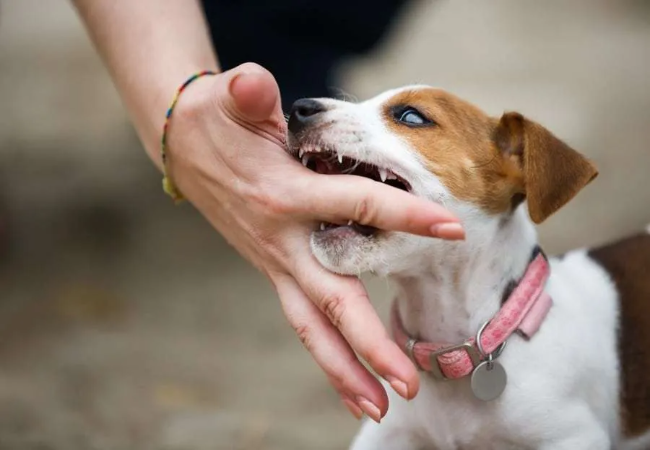Dog Biting 2025: Vet-Approved Tips to Prevent Nipping & Biting 🐶✨

In this article
Dog Biting 2025: Vet-Approved Tips to Prevent Nipping & Biting 🐶✨
By Dr. Duncan Houston BVSc
Biting is one of the most common challenges dog owners face, and it can happen for many reasons. While it’s normal for puppies to nip as they explore their world, biting in adult dogs can be more concerning and sometimes dangerous. Understanding why dogs bite, how to recognize warning signs, and learning strategies to prevent or manage biting behavior is essential for a safe and happy household.
🐾 Why Dogs Bite
Dogs bite for several reasons, and identifying the cause is the first step in preventing unwanted incidents:
-
Teething and Exploration
Puppies explore the world with their mouths. During teething, biting helps relieve gum discomfort. Teaching bite inhibition early helps puppies learn how to control their bite strength and interact safely with people. -
Playfulness
Dogs often use their mouths during play. Puppies, in particular, may nip at hands or feet, thinking it’s part of a fun game. While play biting is normal, it’s important to redirect their energy to toys or appropriate outlets. -
Fear or Anxiety
Dogs may bite when they feel threatened, scared, or cornered. Understanding the root cause of their fear and addressing it calmly can reduce biting incidents. -
Pain or Discomfort
A dog experiencing pain may bite if touched or approached. Always approach unknown or injured dogs with caution and seek veterinary advice if needed. -
Resource Guarding
Some dogs bite to protect valued resources like food, toys, or resting spots. Behavior modification and training can help manage resource guarding safely.
⚠️ Signs a Dog May Be About to Bite
Recognizing the warning signs can help you prevent bites before they happen:
-
Stiff body posture: A rigid stance may indicate tension or readiness to bite.
-
Growling or snarling: Vocal warnings are a clear sign that a dog is uncomfortable.
-
Showing teeth: Baring teeth is a defensive signal.
-
Raised hackles: Hair along the spine standing up shows heightened emotions.
-
Intense staring: A fixed gaze can precede a defensive or aggressive response.
Being alert to these signs helps prevent escalation and ensures safety for everyone involved.
🐶 How to Prevent Puppy Biting
-
Socialization
Expose your puppy to different people, animals, and environments early to build confidence and proper social behavior. -
Bite Inhibition Training
Allow puppies to play with other vaccinated dogs so they learn bite control naturally. -
Redirect the Biting
Offer a chew toy or treat whenever your puppy tries to bite you. -
Positive Reinforcement
Praise and reward calm, non-biting behavior to encourage good habits. -
Time-Outs
Briefly remove your puppy from playtime or isolate them in a crate to teach that biting leads to consequences.
🐕 Managing Biting in Adult Dogs
-
Obedience Training
Teaching basic commands helps establish leadership and reduces the likelihood of biting incidents. -
Identify Triggers
Notice the situations that provoke biting and work on desensitizing or managing them safely. -
Desensitization & Counter-Conditioning
Gradually expose your dog to triggers while rewarding calm responses, creating positive associations. -
Muzzle Training
Use a muzzle as a temporary safety measure while addressing the root cause of biting. -
Consult a Professional
Persistent or severe biting may require guidance from a certified dog trainer or veterinary behaviorist.
✅ Key Takeaways
Biting is a behavior that can be addressed with patience, consistency, and positive reinforcement. Whether you have a playful puppy or an adult dog, understanding why they bite, recognizing the warning signs, and using the right training strategies will help you raise a safe, well-mannered companion.
Remember: safety, empathy, and proactive training are the best tools to nip biting in the bud and foster a harmonious relationship with your dog.



